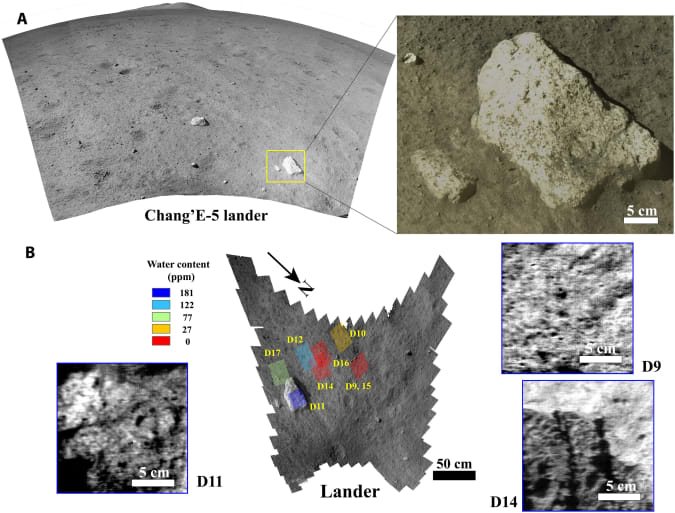China’s Chang’e-5 lunar lander has found water on the surface of the Moon, marking the first-ever time scientists have found on-site evidence of the substance on Earth’s satellite. In a study published in Science Advances, Chinese researchers claim the lander detected signs of water molecules or hydroxyl, a close chemical cousin of H2O. Chang’e-5 used a spectrometer to analyze the composition of regolith in close proximity to its landing site. It found that most of the soil had a water concentration of less than 120 parts per million, making the surface of Luna much drier than that of the Earth.

Chinese scientists believe most of the molecules came to the Moon through a process called solar wind implantation. Charged particles from the sun drove hydrogen atoms to the lunar surface where they later bonded with oxygen to form water and hydroxyl. The study builds on findings NASA published in 2018 when it found evidence of water on the sunlit surfaces of the Moon using an airborne infrared telescope. For decades, scientists had believed the Moon was completely dry due to its almost nonexistent atmosphere. With no atmosphere, the thought was there was nothing there to protect water molecules from the sun’s harsh radiation.
Editor’s note: This article originally appeared on Engadget.















 English (US) ·
English (US) ·